Build Your Skills
Learn music theory Train your ears Track your tempoRead Now
Get the Newsletter
Categories
- | BeatMirror (10)
- | HearEQ (11)
- | Waay (22)
- | WaayFinder (1)
- Audio (16)
- For musicians (34)
- Guitar (2)
- Music theory (15)
- News (42)
- Startup stories (2)
- Tutorial (4)
Keep in Touch
About Ten Kettles
We love music, we love learning, and we love building brand new things. We are Ten Kettles.
Read more >-
April 21, 2015
Highs and Lows: an Audio Primer (Part 2)
This is Part 2 of our Audio Primer, where we take the basics of equalization (EQ) and put them to use. Last time, we let a train and some birds teach us how to hear highs and lows. Then we talked about the EQ’s distant ancestor, before taking a look at a guitar’s “frequency spectrum.” This time, we’re going to EQ a guitar track in a whole bunch of ways… and then talk about how the humble EQ can be a relationship-saver too.
One instrument, many frequencies
Here’s a short sample of me strumming a guitar. You’ll also find a picture of an EQ, just like the one you’d see in iTunes (click “Window”->”Equalizer” in iTunes 12). You can see that it’s completely flat—each “slider” is set to zero—which means no EQ effect is applied.
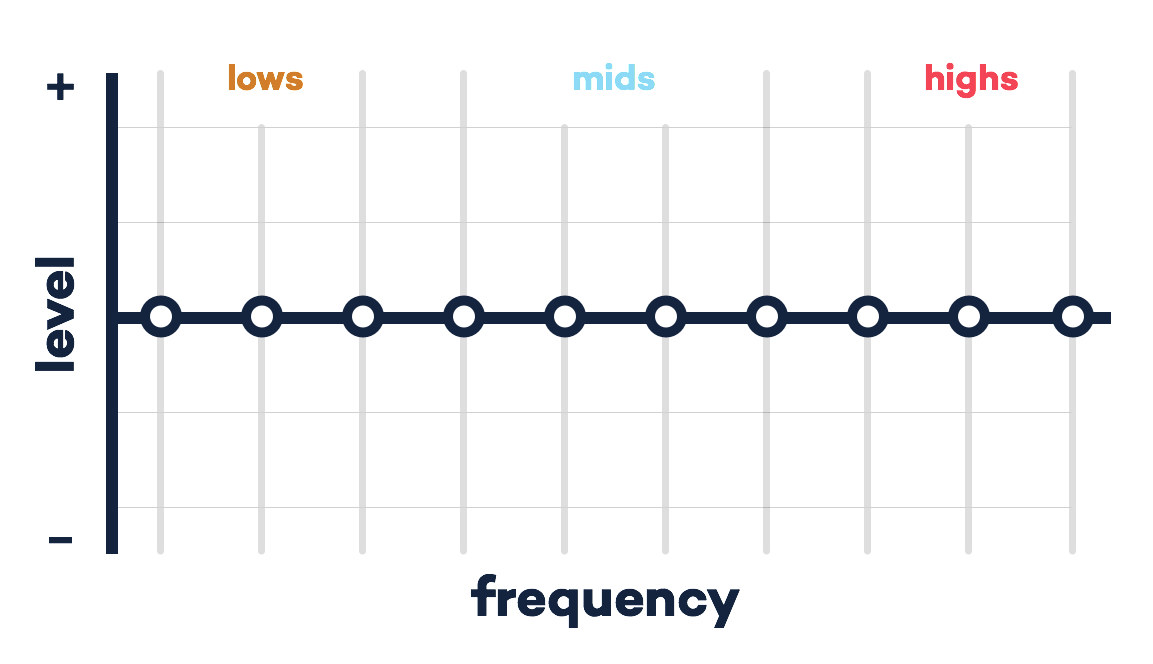
We’re going to use the EQ to change the frequencies in that guitar track. We’ll start with some obvious changes just to get our feet wet.
Highs. Here’s what happens if we really emphasize the highs. You can see on the EQ that we turned up the frequencies on the right—the highs—and turned down everything else.
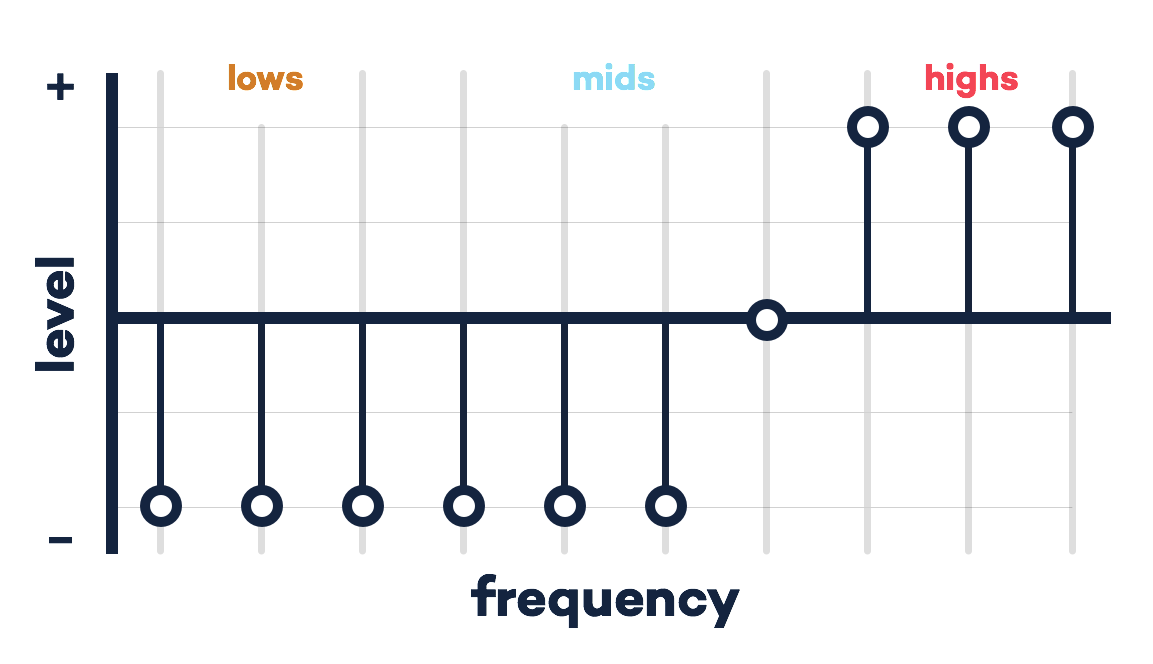
Lows. And here’s what it sounds like if we strip away the highs and mids, leaving mostly lows:
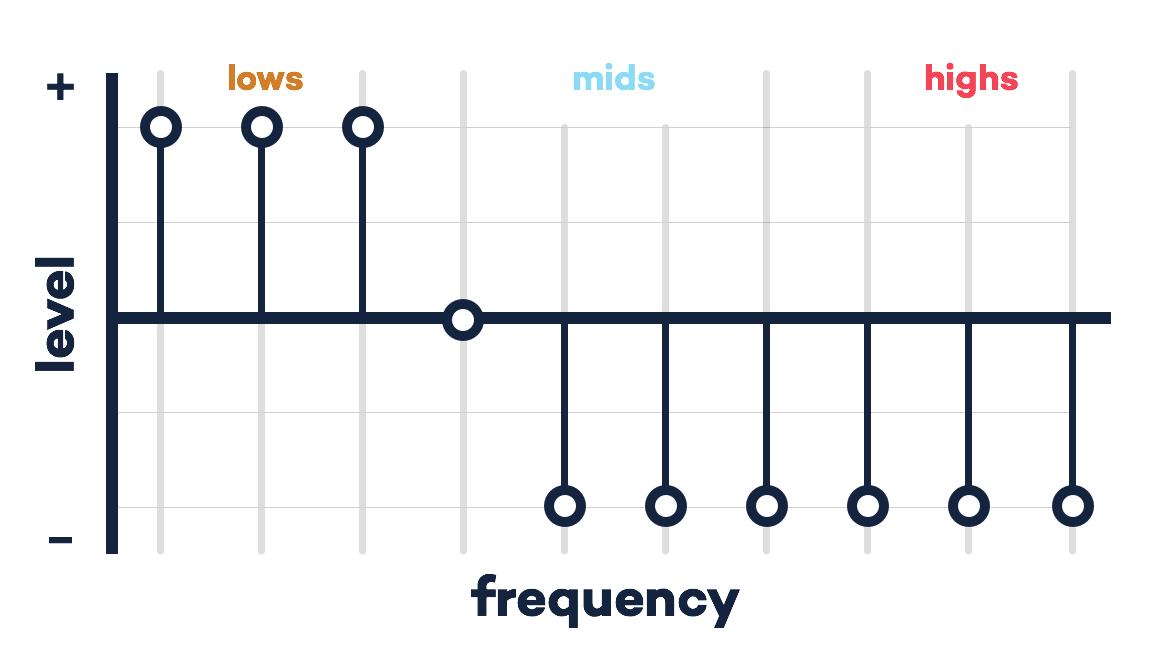
Mids. And finally, let’s emphasize those mids. This one sounds pretty boxy.
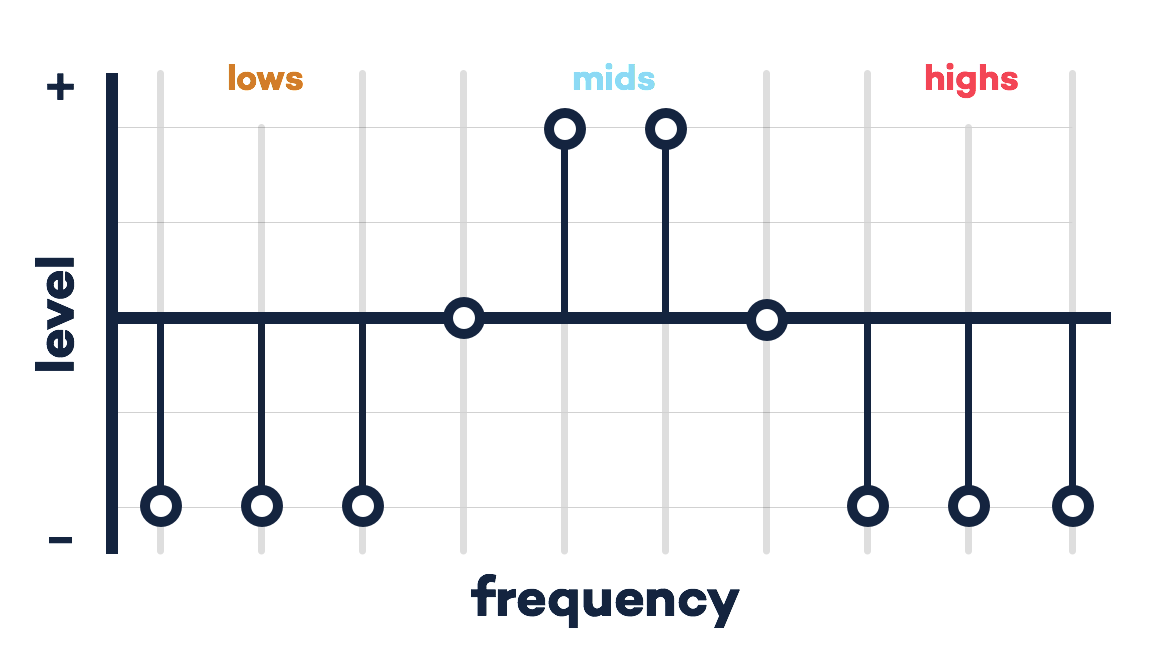
These are all extreme changes so you can hear just what a guitar’s “highs,” “lows,” and “mids” really sound like. But the real question is: as musicians, how do we actually use this stuff?
Bigger is better… sometimes
As a performing and/or recording musician, there are a few different ways you might want to EQ that guitar track. Say you’re a singer-songwriter, and do a lot of recording with just guitar and vocals. In that case, you’ll likely want a pretty full and warm sound for your guitar track. Why? With only two instruments (guitar, vocals), there’s a lot of room in that frequency spectrum to fill!
Singer/songwriter. To get that full sound, you might turn down the highs a little and turn up the lows. This will make the sound bigger without being too abrasive. By cutting out some of the upper-mids, you’ll leave room for the vocals too.
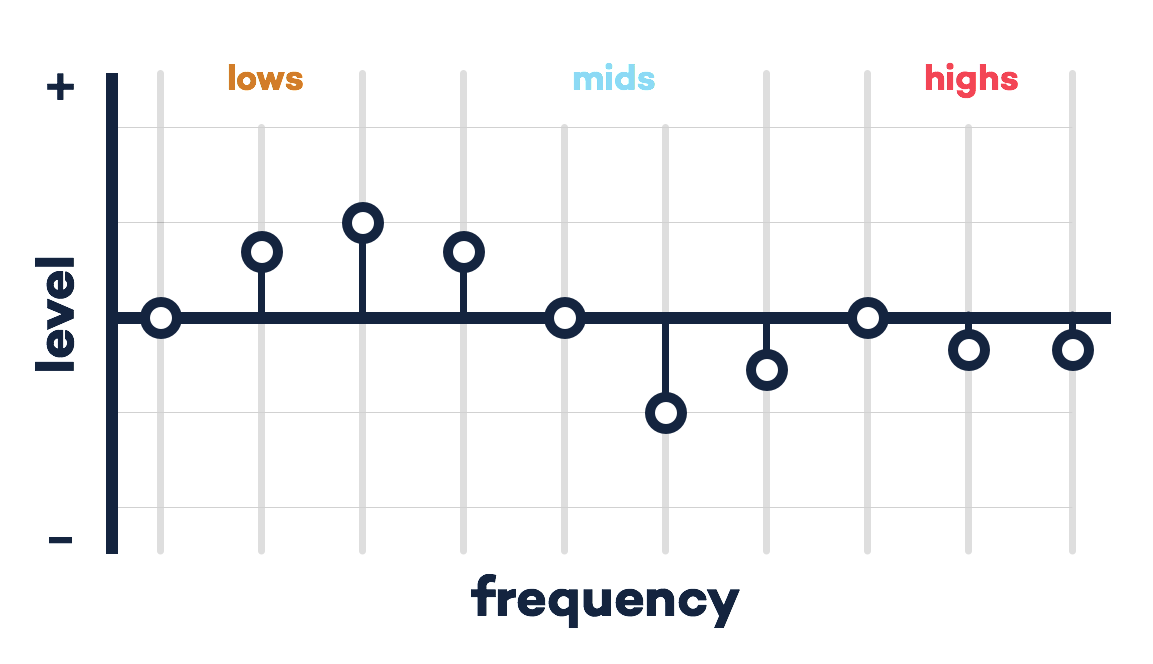
In a band. On the other hand, maybe you play in a big band. In that case, you might want a lighter guitar sound that’ll fit nicely with the other instruments. Here we take out some of the low-end to make room in the mix for the bass guitar. We also trim out some of the upper-mids again to leave space for vocals.
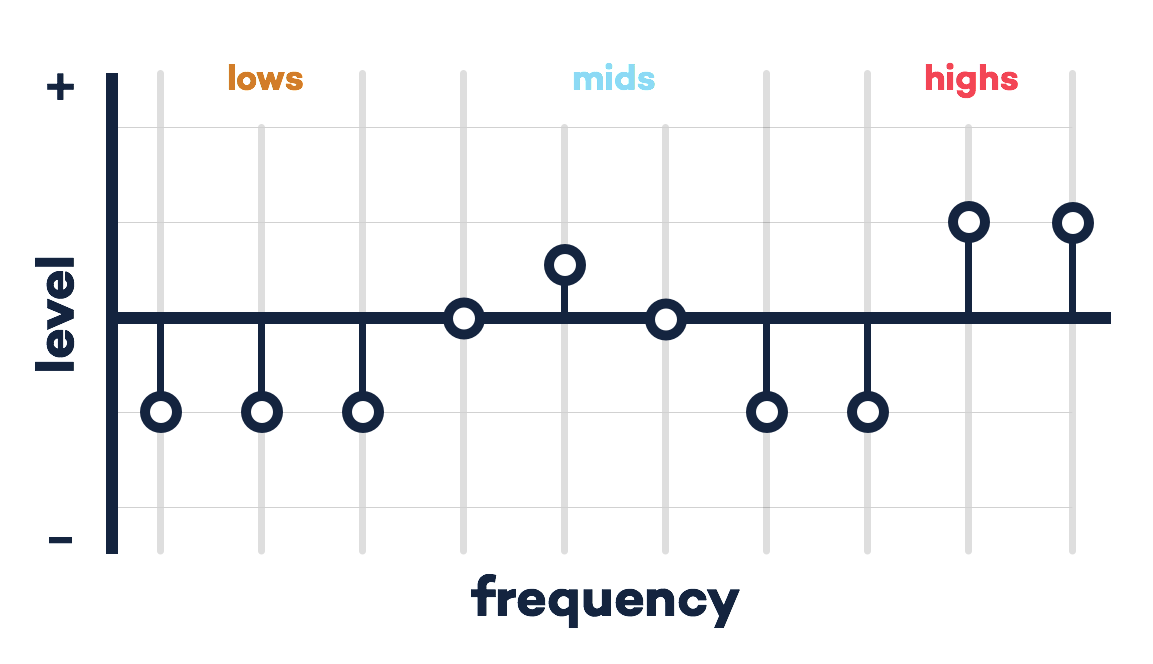
Compared to the “singer/songwriter” guitar sound, this one sounds pretty light-weight on its own, even a little thin. That makes sense: this track isn’t meant to be played on its own. If you find yourself constantly adjusting your volume but it never sounding quite right, try spending some time with your EQ.
EQ saves relationships
Have you ever gotten into a “You’re too loud! / No I’m not!” argument at band practice? You know, when a player wants to be louder, but the rest of the band wants her or him to turn down because it’s drowning everyone out? It can get out of hand fast, because everyone thinks they have a valid point. And they’re right! Everyone in the band needs to be able to hear themselves. But there’s a good chance the problem here isn’t just volume—it could be EQ too. A poorly-EQ’d sound will never be the right volume. So, to dial up the band love, give some focus to EQ levels before jumping to the volume knob.
Conclusion
In Part 1 and Part 2 of this article, the goal was to demonstrate what highs, lows, and mids actually sound like, and to show you what EQing can do for your music. How did we do? Let us know in the comments. If you’re convinced that learning to EQ is for you, then check out our HearEQ video for some more examples and to learn about our app. And if you want some EQ tips for your next show, then you may want to read “Make your shows shine with these simple EQ tricks.” Enjoyed the article and want to read more about audio? Then you just might want to sign up for our newsletter too.



Excellent article for beginners. Thanks a lot!
Thanks! Glad you found it useful. -Alex